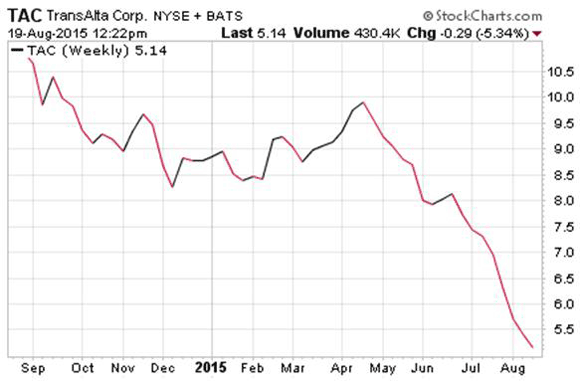Dividend History Helps You Pull In Higher Income
New Yorkers usually can’t resist taking a shot at California.
All the superficial showbiz glitz. The shortage of history.
I get it. When San Francisco started to boom, New York City was already a few hundred years old.
But…
When Juan Cabrillo sailed into San Diego harbor in 1548, New Amsterdam didn’t exist.
And in Amsterdam proper, it would be another 54 years before the world’s first stock market opened and traders started buying and selling shares in the Dutch East India Company.
History is wonderful stuff for investors. And it’s open to endless interpretation, unless you’re looking at a stock’s dividend history. This is about as black and white as it gets.
Dividend History 101
Want to put history to work so you can make smarter and safer investments in the best dividend stocks?
All you have to do is take a look at how the dividend has been paid. Look at how it’s grown over the years. Check to see if there have been long stretches without an increase. And look for dividend cuts.
Beyond hard numbers, you’ll get a good feel for the company’s dividend philosophy. For instance, you’ll find some mature companies that really don’t need to invest a lot of money into their future growth and are more generous with dividends than others.
Some companies like to keep a big war chest, some don’t. Some squirrel away money for a possible future acquisition, or stock buybacks, and some just plow the money into growing the dividend.
Tracking the dividend history will give you a good feel for this.
And as far as buybacks go…
The potential for a stock buyback to make your shares more valuable is just that. Potential.
And potential doesn’t pay your mortgage.
Dividends are real dollars. Cash on the barrelhead.
Stock buybacks could fill their own history book, because talk is cheap. It’s one thing for a company to announce a stock buyback, which is generally a good thing… it lowers the numbers of shares out there, and has the potential to increase the value of the stock you own.
But it’s another thing to go into the market, spend real money, and buy your company’s stock back.
Stock market history is full of stories about companies that announced stock buybacks that never quite happened.
And one of the ugliest stories comes from a city that has been a rich source of American history since the days of the 13 colonies… Philadelphia.
A Fall From Grace In Philly
Earlier this month, PHH Corp. $PHH said it was changing its mind. It was putting a stock buyback on hold.
On August 5th, the stock traded at $24.09. Two days later, it went for $15.60.
You see the same kind of punishment when there’s a dividend cut.
In the spring of 2008, Washington Mutual and Wachovia, two beat-up banks, cut their dividends.
Then they cut and ran, and went out of business… the ultimate dividend bust.
General Motors $GM cut its dividend in July of 2008. A year later it declared bankruptcy, and the dividend didn’t come back until 2014.
Does a dividend cut mean you should sell and run for the exits?
Well, hard and fast rules for the best dividend paying stocks come with their own risks.
But as far as alarms go, it’s tough to think of one that blares louder than a dividend cut.
That’s what dividend history teaches us time and time again.
Where Are All The Crystal Balls?
It gets downright comical how much attention is paid to CEOs talking about what’s going to happen next.
Flawless crystal balls don’t sit on the desks of Tim Cook at Apple $AAPL, Jeff Bezos at Amazon $AMZN, and Howard Schultz at Starbucks $SBUX.
There’s definitely not a crystal ball on the desk of Dawn Farrell. She’s the CEO at TransAlta Corporation $TAC, a utility based in Calgary, Alberta Canada.
TransAlta is Canada’s #1 operator of coal-fired power plants, big into natural gas generation and hydro-electricity. It also generates a third of Canada’s wind power.
History… TransAlta has plenty of it. The firm is more than a hundred years old.
But the dividend history at TransAlta is more like a horror movie.
Here’s What A Scary Dividend History Looks Like
$TAC makes its quarterly dividend payment of 14 cents later this week.
You take a look at the dividend history, and you see that in early 2014, the dividend was cut from 29 cents to 18 cents. And it’s still skidding.
Between 1994 and 2007, TransAlta paid a dividend of 24 cents, then 25 cents.
It was a model of consistency. In 2009, the dividend went up to 29 cents but it didn’t stick.
So you look at this and based on history, you can’t help but be a little bit skeptical.
You set the history book aside and crack open the financials for some current events.
Take a look at the dividend payout ratio. This is the number that shows how much of the revenue coming in goes back out to pay dividends.
This number is expressed as a percentage, and you usually want to see it down below 50%.
What’s TransAlta Corp’s dividend payout ratio?
345%.
You got it… this means the company is living beyond its means. It can’t afford to pay the dividend.
It’s one of those dirty little dividend payout ratio secrets exposed.
It’s spending almost three and a half times as much money to pay the dividend this quarter as it has net income coming in.
How long do you think this keeps going?
Will Dividend History Repeat Itself?
Do you think we’re in for a re-run at TransAlta? Is history about to repeat itself? In 2014, the dividend was slashed by 26%.
And you’ve got everything lined up right now for the same thing to happen again.
Now you might ask yourself…
“If TransAlta can’t afford to pay the dividend, why not just cut it significantly, take its lumps, and get on with things?”
I’m with you. You’d think this would be the best thing to do for the long haul.
Well, chances are the company figures things will get better, and revenues will rebound sooner rather than later.
Maybe it believes the worst is over for its coal business, or that its investments in Australia will pay off.
Sometimes, history tells us that when the board of directors keeps the dividend the same, it’s a vote of confidence that is somehow rooted in fact.
But confidence lives in both the present and the future.
Look at the balance sheet, and you’ll see TransAlta is burning more than coal. It’s burning cash.
Liquidity is down from a year ago.
So in a situation like this, you figure that TransAlta is dipping into its cash to keep the dividend the same so it can keep its current shareholders happy.
And that’s a tall order, since the stock has been on a downhill run…

The Other Dividend History Lesson To Learn
Empirical evidence (the numbers) suggests that when dividends are cut, the stock price suffers.
Is this always the case? No. It’s not a given, but it’s definitely a concern. And we’ve seen it at TransAlta.
It’s safe to say that nobody who sits around the table in a board of directors meeting is chomping at the bit to cut the dividend.
Get yourself on the right side of dividend history. Stay focused on the best dividend stocks.
A little bit of study can give you a lot of safety.
Cordially,
Paul Duke
Note: Paul Duke writes and edits DividendStocksResearch.com. Sign up for our free dividend reports and dividend newsletter at https://www.dividendstocksresearch.com/free-sign-up. We’ll show you how to create regular income by investing in dividend stocks, easily, step-by-step.
Category: Dividend Bust





